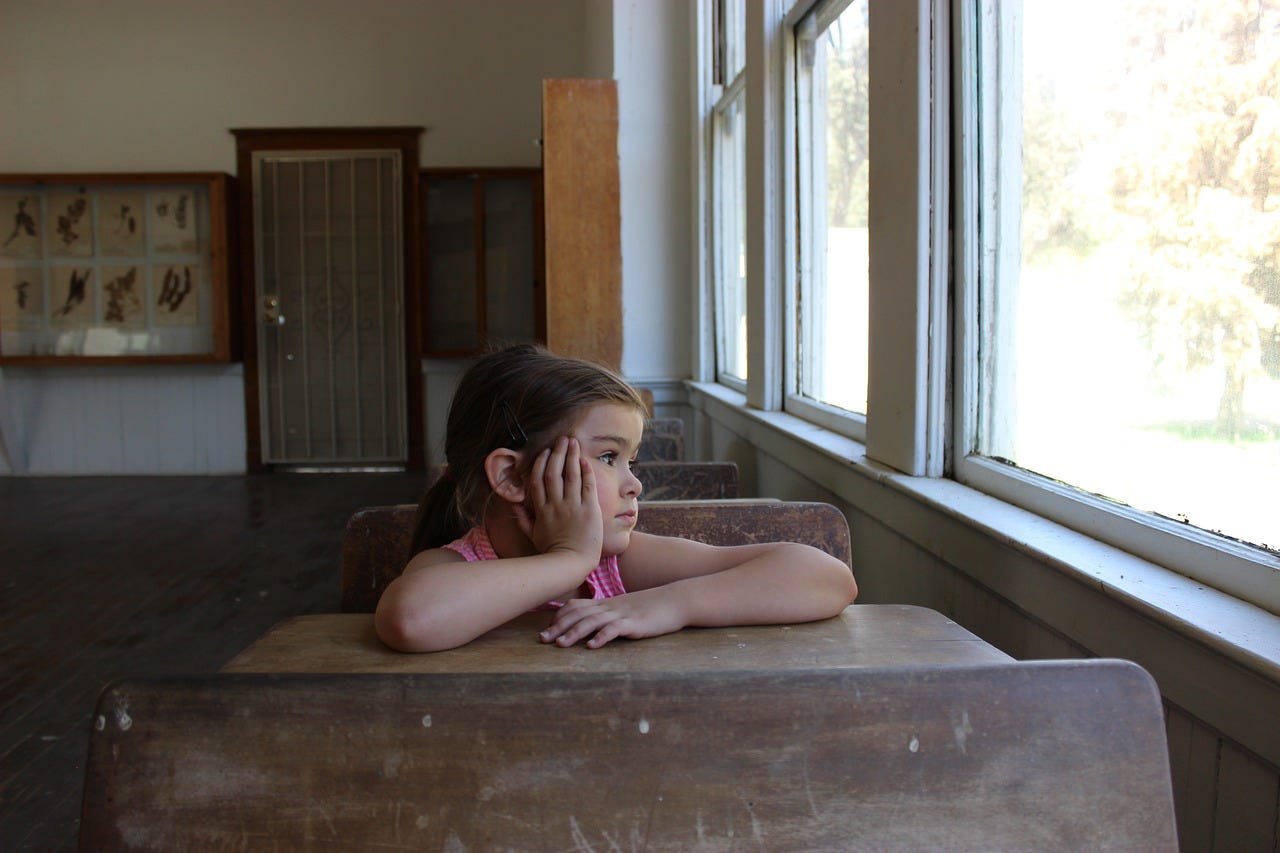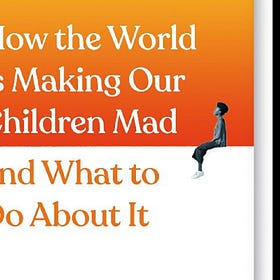The Nervous System in the Classroom
How Schools and Educational Systems Can Be Anathema To Children's Healthy Development
Introduction
The work of Dr Stephen Porges, and his “Polvagal Theory”, was instrumental in my own understanding and knowledge of the Nervous System, chronic illness and trauma, and from there, the human condition, and societal issues. It is what led me to glean that my own “Idiopathic Parkinson’s Disease” diagnosis was actually me being stuck in the freeze or “tonic immobility” stress response.
Porges’ basic tenet is that our Nervous System is constantly evaluating the environment for cues of threats or safety, through a danger sense he calls “neuroception”. If our neuroception deems the situation to be safe, we can be in calm, relaxed, and socially engaged states. If it deems there is a threat, it activates fight or flight responses, or if the danger is perceived as sufficiently great, puts us into a state of freeze.
Note here the use of the term “safe” has nothing to do with “health & safety” or “safe spaces” - it means feeling safe at a visceral, Nervous System level.
Porges has used his work as a lens to look at various aspects of modern life, such as the design of schools and hospitals, and found them wanting. Indeed, through this lens, many of our institutions seem almost designed to constantly trigger our sense of threat.
In his 2011 interview The Polyvagal Theory, Somatic Perspectives, Porges puts education systems and schools under the spotlight of his Nervous Systems work, explaining why modern schooling and educational methods are at odds with healthy Nervous System functioning. Here, we work through this important work.
However, even though we are discussing the classroom, for me the direct analogies carry over in a very straightforward way to any and all of our institutions where some folks have control or power over the lives of others. For example we could have talked about prisons, where we can straightforwardly swap out "teacher" for "prison guard", and "child" for "prisoner", or corporate employment, where we swap “teacher” for “manager/boss”, and “child” for “employee”, hospitals/healthcare (doctor and patients), government (elected politician and electorate), or caregiving (caregiver and cared for).
Dr Porges’ Critique of the Classroom
The quotes below are taken from the 2011 interview.
“Educational processes are working very hard to dismiss the body’s responses to environmental features. If we observe children in a classroom, we note a variety of behavioral features that illustrate that some children are safe and can sit comfortably in the same environment that triggers, in other children, the hypervigilant behaviors characterizing a lack safety.”
“Moreover, the children who are chronically monitoring the classroom for danger cues are the same children who have difficulties in learning, while those with the features of feeling safe can attend to the teacher and learn efficiently.”
For myself, what Porges is saying here, essentially, is that no one-size-fits-all system can possibly work for everyone, and forcing children who do not fit the model, to try to fit in, does not serve anyone, because then challenged behaviours will arise due to involuntary Nervous System fight, flight and freeze, responses of children who feel unsafe in that setting, which are then disruptive to the whole class. This includes dysregulation of the teacher’s Nervous System, which then feeds back to the child, making them feel even more threatened.
So, although all the children in the same classroom are experiencing nominally the same environment or stimulus, their Nervous System can react in very different ways:
“..the response to a common stimulus is qualified by the physiological state, the same stimulus in the same environment can produce qualitatively different responses based on the physiological state of the individual at the time the stimulus is presented.”
I feel we all know intuitively this to be true, because we've all experienced how we make very different decisions, take different actions and behave to others quite differently, depending on what state our Nervous System is in at the time. We have all made “rash” decisions in the “heat of the moment”, and then later, when calmed down, have asked ourselves “why did I do that?” or felt the need to apologize to someone. Indeed, in a very real sense, I believe we are [at least] three different people in one, depending on whether we are calm, stressed, or life threatened.
The important point to note, is that even adults may behave “inappropriately” in a particular social circumstance due to stressors/threat. Our responses to stimulus when we feel unsafe, stressed or life threatened, are largely automatic, involuntary and beyond our control, unless we have done a lot of work on ourselves. Thus we can hardly expect children, with their immature, developing Nervous Systems to exert self-control beyond what mature, self-regulating adults are [in]capable of.
“Unfortunately, the traditional classroom model for education assumes that if some children can perform well in a classroom, every child should. Thus, our society treats the behaviors of individuals, who are behaviorally or viscerally reactive to slight changes in stimulation, as bad. Society assumes that these children should be able to voluntarily turn these behaviors off.”
“Rather than investigating and understanding that there is a neural substrate underlying the observed range of individual differences, we basically convey to these children that the behaviors are bad even if the behaviors are involuntary.”
“Alternatively, the educational process could celebrate some of the unique sensitivities that people have. However, this seldom occurs and leads into the world of trauma. In this world, people’s bodies respond. In some cases, the behavioral pattern and neural regulation changes dramatically following trauma. These changes can be so great that the behavioral features may appear to represent a totally different person, who no longer can relate to others or interact in the same world. Since the behaviors of the traumatized individual do not conform to the expectations of typical social interactions, the traumatized individual often feels that they are inadequate or can do things correctly. These feelings of inadequacy may be driven by societal interactions.”
So the current mainstream educational systems are likely part of vicious circle in which already sensitive/sensitized children are negatively affected and become further sensitized.
Children Are Not Learning Machines
“To re-emphasize, we treat children in school as if they are learning machines and the success of school is really defined by what information we are able to program into that machine. Learning how to regulate your visceral state [Nervous System] are not part of the curriculum.
Indeed, I have advocated what we should be teaching the kids is knowledge of their own Nervous System (fight, flight and freeze), physiology, minds and brains, and the mind-body connection, and providing them, from an early age, all the tools that have been developed in recent years for self-regulation (self-calming), including breathing, meditative, cognitive, and visualization techniques and exercises, and also teaching them about co-regulation, healthy human relationships and boundaries:
“Thus, opportunities to exercise neural systems to improve neural regulation of physiological state, which in turn would support a more efficient expression of social behaviors, are not available or are minimized in the prevalent educational models.”
Indeed, the current set-up is self-defeating even in terms of “programming” kids, since when kids feel safe at the Nervous System level, they are much more amenable to learning, listening and absorbing information, and behaviours are “better”.
“These points become obvious when studying challenged individuals, like autistic children.”
I find there is an important subtlety in Porges' choice of words here, especially the word “challenged” - the media and educational system are currently bandying around the word “challenging” (e.g. “challenging behaviour”) to such circumstances, which implicitly blames the individual child for their behaviour. I believe Porges has it right and these are “challenged behaviours”, resulting in fact from the child's physiology/Nervous System being challenged by the faults of the system which works against them.
“In contrast, the prevalent model forces the individual child to try to regulate in a context that may make learning inefficient. In addition, the child’s Nervous System might not be sufficiently developed to regulate in a complex setting. So rather than incorporating an understanding of how the Nervous System regulates behavioral state, we try to use laws of learning by ramping up the motivation through punishment or reward to change behavior when perhaps the neural mechanisms are not sufficiently developed or atypical. Thus, these strategies are, at best, inefficient”.
For much more about these topics, especially what adults (teachers and parents) can actually and practically do, I highly recommend these books:
Book Review: "Grounded: Discovering the Missing Piece in the Puzzle of Children's Behaviour"
“Must read book for anyone interested in the wellbeing and behaviours of children (and in chronic illness/trauma too)!” I have written a lot myself about Dr Stephen Porges’ work on understanding our Nervous System's defensive systems and the resulting concept of healing through feeling Safe by being with appropriate others ("social engagement", “co-regul…
Book Review: “How the World is Making Our Children Mad, and What to Do About It: A field guide to raising empowered children and growing a more beautiful world"
If you are a: parent wanting your children to be able to live their best lives, teacher wanting to give your pupils the best of starts in life paediatrician wanting to optimize the psychological health of your patients; human being wanting to create the best world for the flourishing of all our children,
To learn more about the lens of the Nervous System for understanding ourselves:






Very interesting article, but I think schools (and other institutions) are designed as they are for purpose. Public schools are prisons and indoctrination is the subject. Read John Dewey and you will see it's a socialist plan to make obedient subjects, not critical thinkers. Education is not the goal.
Always interesting and informative Gary on a complex topic that I am also interested in. You are taking a more focused approach than I as I am merely a student enrolled in Neurology at a traditional university.
Neurogenesis is my focus, the growth or regeneration of neurons in adults. Until recently it was believed that adults could not regenerate neurons.
Always curious, I wondered about this. White blood cells live for days, red blood cells live for months, skin cells live for perhaps a year all the way thru the medical index of 80 organs in the human body. (I believe there are 81 systems but that will have to wait for my thesis.)
But, “Can we, as adults, grow new neurons?” Neuroscientist Dr Sandrine Thuret says that adults can grow new neurons.
One lecture she gave included the statement “How to Increase Neurogenesis… Exercise, Learning, and Sex…”
She goes on and mentions fasting, autophagy, diet, vitamins and minerals etc. etc. but she had my interest with the first three; exercise, learning and sex.
I never had a professor like her my first trip thru College.
Here was a scientist who understood the complexity of the human body. Yes, we students are sometimes given a brain in a glass jar, or we may be allowed to dissect the brain from a cadaver, but… what can we learn from that?
When she mentions zinc and its importance to the health of the hippocampus, she is talking about a living system that will thrive in the presence of zinc and wither and decline without it.
Now let us turn to the work of Dr Bruce Ames, PhD and his theories about something he calls “Triage”. Prolonging healthy aging: Longevity vitamins and proteins. He talks of many things, but to just focus on zinc for the moment as “Zinc, for example, is in 2,000 proteins”.
During “triage” the body sacrifices longevity for short term health so if you become infected with a virus, COVID 19 for example, your body allocates the available store of zinc to the immune system by pulling it out of other organs. Everyone knows about the loss of taste and smell associated with a serious viral infection, the olfactory bulb is normally rich in zinc and needs that mineral to function.
In brief, the olfactory bulb for taste and smell is not as important as survival and zinc is a keystone of the immune system and so has priority. The other important system is the hippocampus, and its role in learning and memory.
Zinc again.
A zinc deficiency at any age would lead to sub-standard performance on academic challenges and in older humans some form of ‘dementia’.
Zinc is just one of the “30 vitamins and minerals” that Dr Ames mentions.
I believe that he was 90 years old when he wrote that paper. And as always “By their deeds you will know them.” Matthew 7:16
Time for one more quote:
The time has come,' the Walrus said,
To talk of many things:
Of shoes — and ships — and sealing-wax —
Of cabbages — and kings —
And why the sea is boiling hot —
And whether pigs have wings.' Lewis Carroll
And never take medical advice from a student who quotes Lewis Carroll